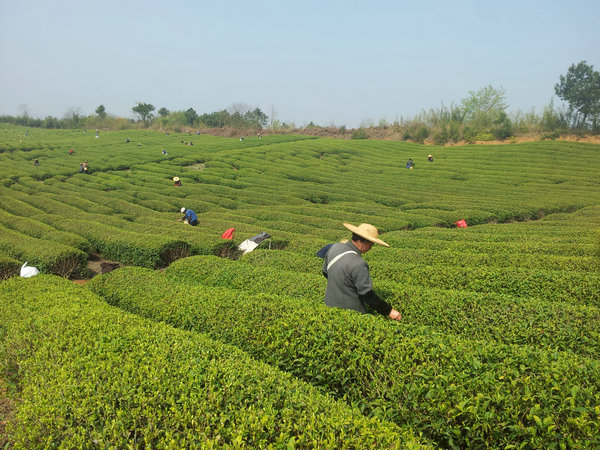The beauty of China’s spring teas
 |
|
A Dafo longjing green tea production base in Xinchang, Zhejiang province [Photo provided to China Daily] |
For those who wish to drink the best teas of China, major Beijing tea businesses are teaming up to offer a taste of their spring teas. The 12th Beijing Spring Tea Festival opened at the Beijing Grand View Garden on Friday and will last through Saturday. Tea companies such as Lao She Teahouse, Wuyutai and Zhangyiyuan tea stores are showcasing their spring tea products and giving free gifts or store discounts until the end of May.
The Chinese value the first batch of spring teas, especially those produced before Tomb Sweeping Day, which fell on April 4, and guyu, the last solar term in spring that fell on Tuesday. The teas, named mingqian cha and yuqian cha, are picked before these two days and are widely considered the best of the year. The spring’s lower temperatures help the tea leaves maintain a higher level of fragrance.
Green tea has been shown to lower blood pressure and cholesterol, aid in digestion and help tea drinkers lose weight. It is rich in polyphenols, which are natural chemical compounds found in tea, and is believed to help reduce the risk of coronary heart disease. Some say drinking tea can help prevent cancer and corner radiation.
Spring tea is high in amino acids and vitamins, which not only imparts a better taste, but also many health benefits.
According to Chinese medical theories, the vitality of tea sprouts during the spring will help the body adapt to the rising levels of yang energy in nature.
China has many tea-producing regions, from Hainan province in the south, Shandong province in the east, to the Tibet autonomous region in the west. Spring tea leaves are the highest grade for green tea production.
For first-timers, early spring teas taste light. But if the tea is prepared with the right type of water and with the proper method, it presents a subtler structure of flavors.
Earlier this month, before Tomb Sweeping Day, I stayed briefly at a tea farmer’s house in an ancient village on Dongting Mountain in Suzhou that is the original production area for biluochun. My host and hostess were tea farmers with more than 40 years of tea-making experience.
I watched the hostess screen the tea while the host roasted it in a large iron wok.




















